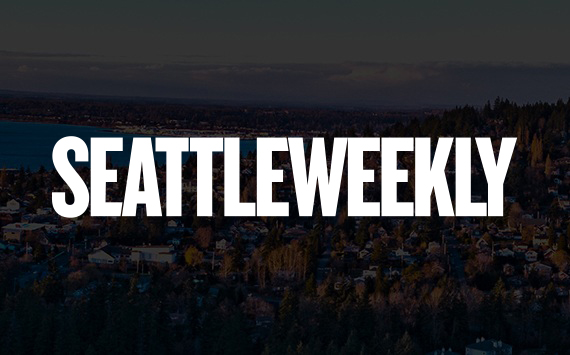On Christmas in Impoliticsland, we got two gifts: one good, one bad.
The good gift was the decision by Department of Energy Secretary Bill Richardson to site production of tritium (the highly radioactive explosive component in nuclear bombs) at a Tennessee Valley Authority facility in eastern Tennessee. That’s bad news for Tennessee, of course, but a blessed relief for the beleaguered Hanford environment. Tri-Cities business interests, with the vigorous backing of Washington’s congressional delegation and governor (and the equally vigorous opposition of Oregon’s), had lobbied hard for the past two years to restart nuclear production at Hanford’s Fast Flux Test Facility (FFTF) research reactor.
The FFTF proposal was a bizarre, and utterly fraudulent, plan sold to the public as a privatization scheme that would “cure cancer” and bring on an economic miracle from the production of medical isotopes (in a market already glutted with far less expensive ones)—after . . . ahem . . . making bomb innards for a few years, just to jump-start the cash flow, of course.
Despite the political muscle (and campaign contributions to Patty Murray, Gary Locke, and others), the public didn’t buy it. The Department of Energy was deluged with thousands of negative public comments on the FFTF proposal last spring, after it (reluctantly) held hearings in four cities. Protesters turned out in force at the hearings west of the Cascades, making the case that cleaning up the environmental catastrophe that is Hanford is an issue for all of us—and also would create more jobs than would the invention of yet another highly toxic, radioactive waste stream.
That outraged public can now take credit for pressuring the DOE into not making an awful environmental situation at Hanford worse still. But, like many bad ideas that emerge from the private sector looking for taxpayer handouts (c.f. Olympics 2012), the FFTF restart isn’t entirely dead. Capitalizing on the regrets from Locke, Murray, Doc Hastings, et al. that DOE Secretary Richardson didn’t choose to further contaminate the Columbia Basin, FFTF backers are now pledging to press forward with proposals like medical isotope production, plutonium production for the space program, and other idiocies in hopes that one of them will somehow pencil out without big handouts from the nuclear war industry. FFTF is, as Paige Leven from the activist group Heart of America Northwest notes, “a reactor in search of a mission.”
As such, FFTF, which was mothballed in 1992 because of ongoing safety and contamination concerns, is being kept on “hot standby” for proposals that do not yet exist. (As happened with the Olympics, sheer ridiculousness figures to surface along with these yet-to-be-seen Plans B.) This is diverting money from Hanford cleanup to the tune of $32 million to $40 million a year—more than $100 million so far, through next year’s funding cycle. It’s an outrageous misuse of money originally intended to begin to address the environmental emergency posed by hundreds of tanks’ worth of leaking toxic stews presently making their way into the groundwater and toward the nearby Columbia. Now that the DOE has declined to do the wrong thing, it and Congress need to be pressured to do the right thing: Get serious about allocating the money and creating the jobs necessary to start cleaning up Hanford.
Requiem for a league: The bad Christmas gift was the abrupt December 22 loss of the Seattle Reign women’s pro basketball team, along with the entire American Basketball League. The ABL and its nine league-owned teams filed for Chapter 11 bankruptcy, unable to overcome the dual burdens of proving a new pro sports concept and fighting the NBA, which launched a rival women’s pro league the summer after the ABL commenced play. The NBA froze the ABL out of the national television market, without which a pro sports league cannot survive.
Normally, the folding of a pro league is neither cause for great civic mourning nor the stuff of a political column. But the ABL was different. It drew on what’s best in sports—its capacity to draw together people from vastly different walks of life—and vested its fans in the success not just of a particular team but of the league, women’s basketball, women’s sports, and fan- and player-based economics as a model for all professional sports.
Seattle Reign games were actually affordable for a family to attend. And the ABL focused not on a few stars but on the overall quality of play, and on giving all players a decent salary and benefits. The WNBA is a women’s basketball league not only run by men with money from the men’s game, but run on exactly the same model that has ruined the men’s game and canceled this season: television contracts, corporate luxury suites and merchandise tie-ins, taxpayer-funded arenas, and a high-profile star system, with the marketing of teams to their constituencies and the care and feeding of fans as an afterthought. As former Reign general manager Jim Weyerman once put it, “The WNBA is a business—the ABL is a cause.”
The wrong guys (literally) won. The ABL, by its example, showed exactly what was wrong with the $400 million-plus stadium gifts taxpayers are giving the Mariners and Seahawks: Far from bringing communities together, these franchises are rich-male-only business enterprises run by and for their corporate patrons. They could be, and are, profitable even if no fans (or, more accurately, studio audiences) showed up at the gates at all.
It’s a measure of the loyalty the ABL generated in its two-plus seasons that a fan group is hoping to resuscitate the league—by buying it. The scheme, launched by the San Jose Lasers’ fan club, is a long shot; it would require thousands of people buying in at $1,000 (or more) per share, then finding a way to create revenue streams where current management failed—all before the WNBA snaps up players, coaches, support staff, and ad commitments in time for its summer (!) schedule. For the sake of all women’s sports—all pro sports, period—the ABL is worth saving.
Check out the fan group’s Web site, or in the Seattle area, call 206-405-2130. Updates on efforts to save the league are also at http://www.freeyellow.com/6/abl again.






